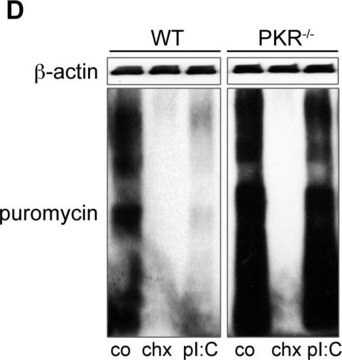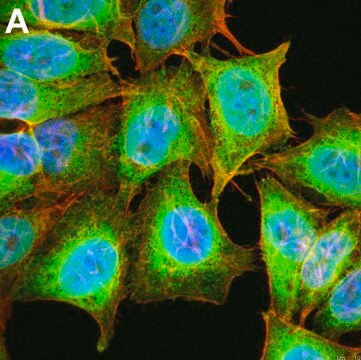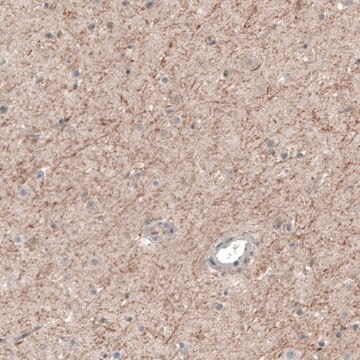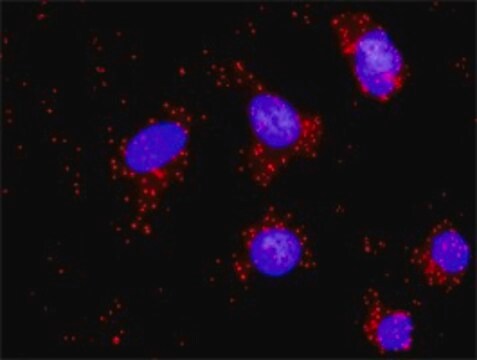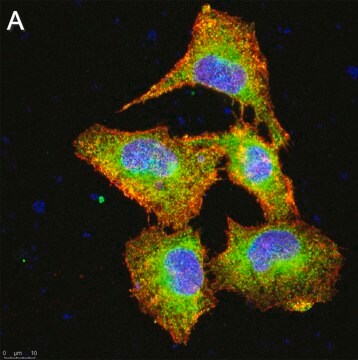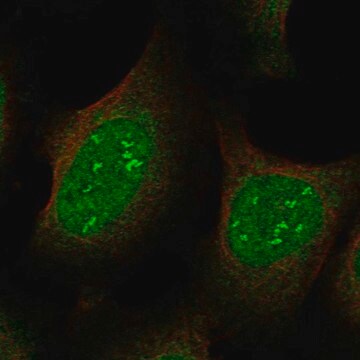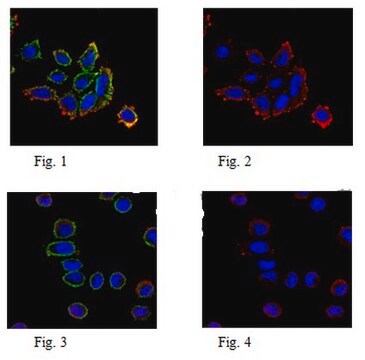MABF920
Anti-SAP/SH2D1A Antibody, clone 1A9
clone 1A9, from rat
Synonym(e):
SH2 domain-containing protein 1A, Signaling lymphocytic activation molecule-associated protein, SLAM-associated protein, T-cell signal transduction molecule SAP
About This Item
Empfohlene Produkte
Biologische Quelle
rat
Qualitätsniveau
Antikörperform
purified antibody
Antikörper-Produkttyp
primary antibodies
Klon
1A9, monoclonal
Speziesreaktivität
mouse, human
Methode(n)
flow cytometry: suitable
western blot: suitable
Isotyp
IgG2aκ
NCBI-Hinterlegungsnummer
UniProt-Hinterlegungsnummer
Versandbedingung
wet ice
Posttranslationale Modifikation Target
unmodified
Angaben zum Gen
human ... SH2D1A(4068)
Allgemeine Beschreibung
Spezifität
Immunogen
Anwendung
Entzündung & Immunologie
Immunologische Signalübertragung
Flow Cytometry Analysis: A representative lot immunostained wild-type, but not sh2d1a-knockout, murine peripheral blood CD3+CD4+ lymphocytes (Zhong, M.C., and Veillette, A. (2013). Mol. Cell. Biol. 33(6):1223-1232).
Western Blotting Analysis: A representative lot detected SAP, but not EAT-2 or ERT, exogenously expressed in the mouse mature mouse T cell line BI-141 (Roncagalli, R., et al. (2005). Nat. Immunol. 6(10):1002-1010).
Qualität
Flow Cytometry Analysis: 0.1 µg of this antibody detected SAP/SH2D1A in mouse splenocytes.
Zielbeschreibung
Physikalische Form
Lagerung und Haltbarkeit
Sonstige Hinweise
Haftungsausschluss
Sie haben nicht das passende Produkt gefunden?
Probieren Sie unser Produkt-Auswahlhilfe. aus.
Lagerklassenschlüssel
12 - Non Combustible Liquids
WGK
WGK 1
Flammpunkt (°F)
Not applicable
Flammpunkt (°C)
Not applicable
Analysenzertifikate (COA)
Suchen Sie nach Analysenzertifikate (COA), indem Sie die Lot-/Chargennummer des Produkts eingeben. Lot- und Chargennummern sind auf dem Produktetikett hinter den Wörtern ‘Lot’ oder ‘Batch’ (Lot oder Charge) zu finden.
Besitzen Sie dieses Produkt bereits?
In der Dokumentenbibliothek finden Sie die Dokumentation zu den Produkten, die Sie kürzlich erworben haben.
Unser Team von Wissenschaftlern verfügt über Erfahrung in allen Forschungsbereichen einschließlich Life Science, Materialwissenschaften, chemischer Synthese, Chromatographie, Analytik und vielen mehr..
Setzen Sie sich mit dem technischen Dienst in Verbindung.

